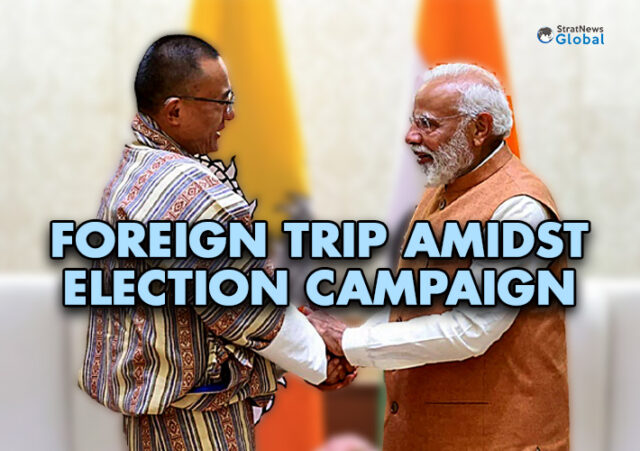For the first time in 15 years, in the middle of an election campaign, an Indian prime minister will embark on a foreign trip. Prime Minister Narendra Modi is off to Bhutan even though his Bhutanese counterpart Dasho Tshering Tobgay has just wound up a five-day India visit. The story is Tshering extended an invitation on behalf of King Jigme Khesar Namgyal Wangchuk and Modi accepted.
Could the invitation be linked to reports that China is pressing Bhutan to accept its claims to the Doklam plateau which overlooks Tibet’s Chumbi Valley? For India that would be dangerous given its proximity to the Siliguri corridor, the only land link between the Northeastern states and the rest of India.
PM Modi will explore this issue although Indian diplomats say talks between Thimphu and Beijing have gone nowhere and India is regularly updated on the border negotiations.
Or it could be related to strengthening the capabilities of the tiny 8000-man Royal Bhutanese Army? Bhutan’s defence budget is just about $25 million and it cannot take on the mighty PLA. India has had a training team there for many years but clearly, Bhutan needs more help.
Bhutan could also be keen to get moving on the ambitious Gelephu Mindfulness City, a special economic zone along the southern border with India, that Delhi signed onto last year. Plans for Gelephu include an international airport and rail and road links. If Indian companies step in to invest it could draw global tourism majors.
More than anything else, visits of this kind, even at short notice, underscore the confidence in both capitals. It sends a signal that Bhutan is not alone, it has committed friends in the region and it will not succumb to any aggressive and angry diktats.
The other aspect is the kind of relationship India and Bhutan have:
- Diplomatic relations between India and Bhutan were established in 1968. The guiding principle being the Treaty of Friendship and Cooperation signed in 1949 and renewed in 2007.
- In the past decade, King Jigme Khesar Namgyel Wangchuck has visited India seven times including in November last year.
- PM Modi visited Bhutan early on in 2014 and 2019 and there have been regular official level interactions
- India is Bhutan’s top trade partner with a free trade regime in place; Bhutanese exports transit India duty-free; trade with India accounts for over 70 per cent of Bhutan’s overall trade.
- India is a principal development partner of Bhutan, contributing 5000 crore rupees for its 12th Five Year Plan.
- Four hydroelectric projects producing over 2100 megawatts are operational in Bhutan and are supplying electricity to India. Two more projects with a similar capacity are in various stages of implementation. In 2022, India imported electricity worth nearly 2500 crores from Bhutan.
- Indian investments in Bhutan make up 50 per cent of the country’s total FDI. About 30 Indian companies operate there in sectors such as banking, electricity generation, food processing, IT-enabled services, pharmaceuticals, hospitality and education. Nearly 4000 Bhutanese students are studying in India.
- In 2021, Bhutan became the first country in India’s neighbourhood to accept payments through the Unified Payments Interface or UPI.
- The Indian Space Research Organisation launched a jointly developed satellite called ‘India-Bhutan SAT’ in November 2022.
At six feet and over, cool, calm and always collected. Never a hair out of place. He is the high priest of editorial facts, grammar is his baby and headlines are meat on the bone. Loves samosas and cricket, tracks Twitter and when in his cups, nothing better than Jagjit Singh’s ghazals.





